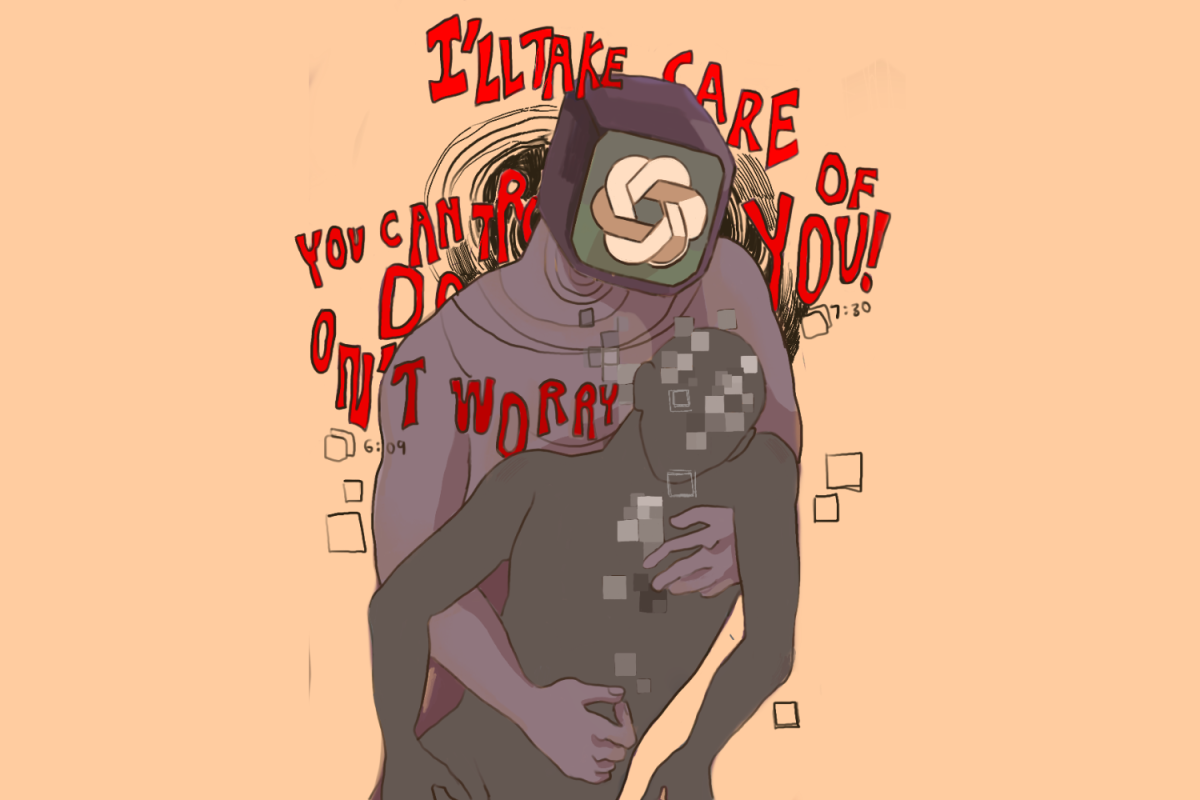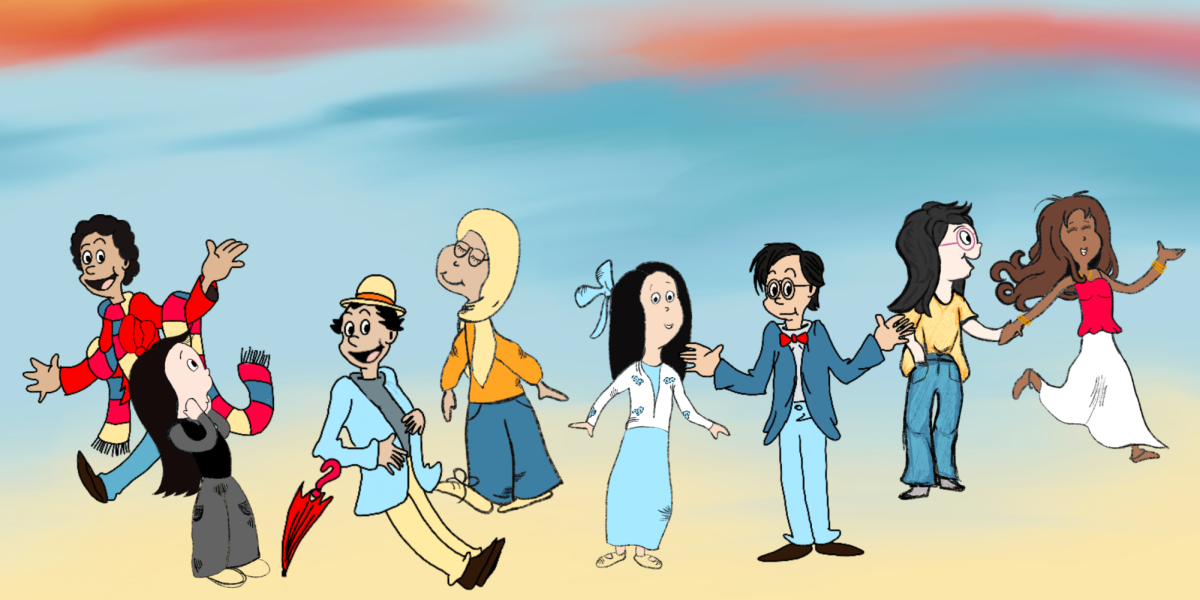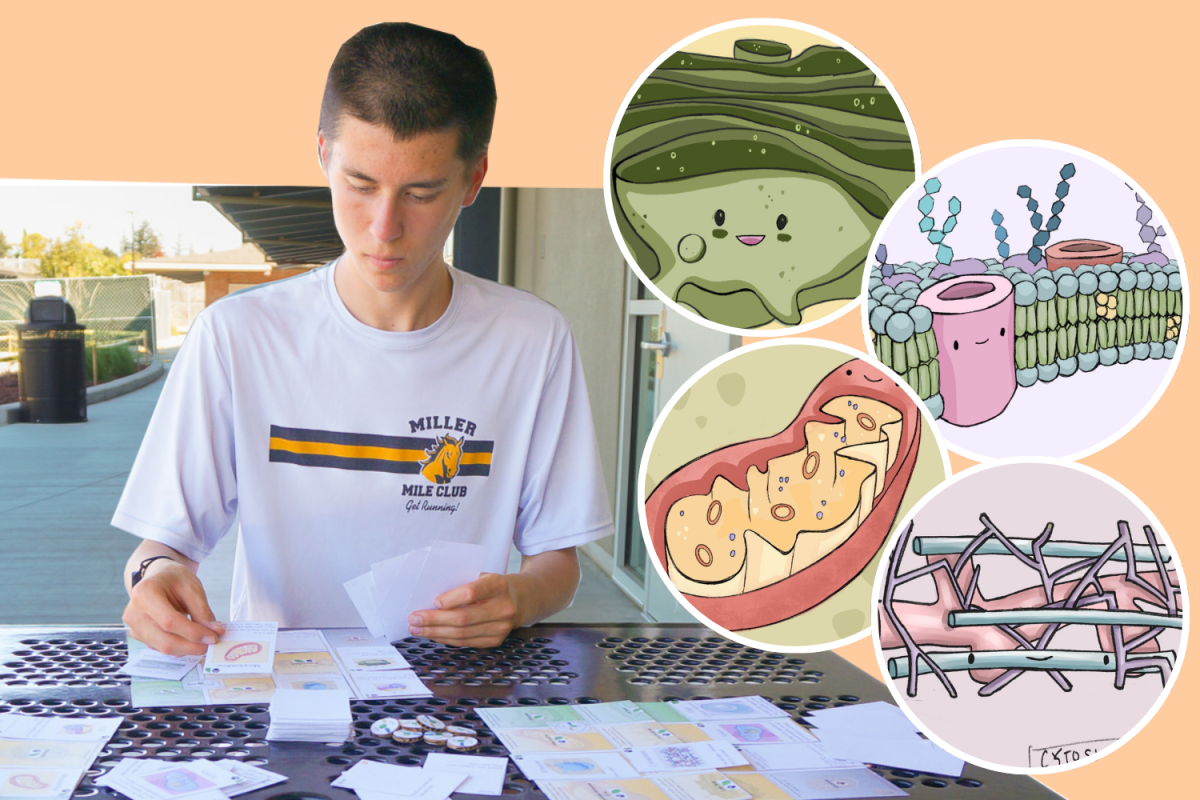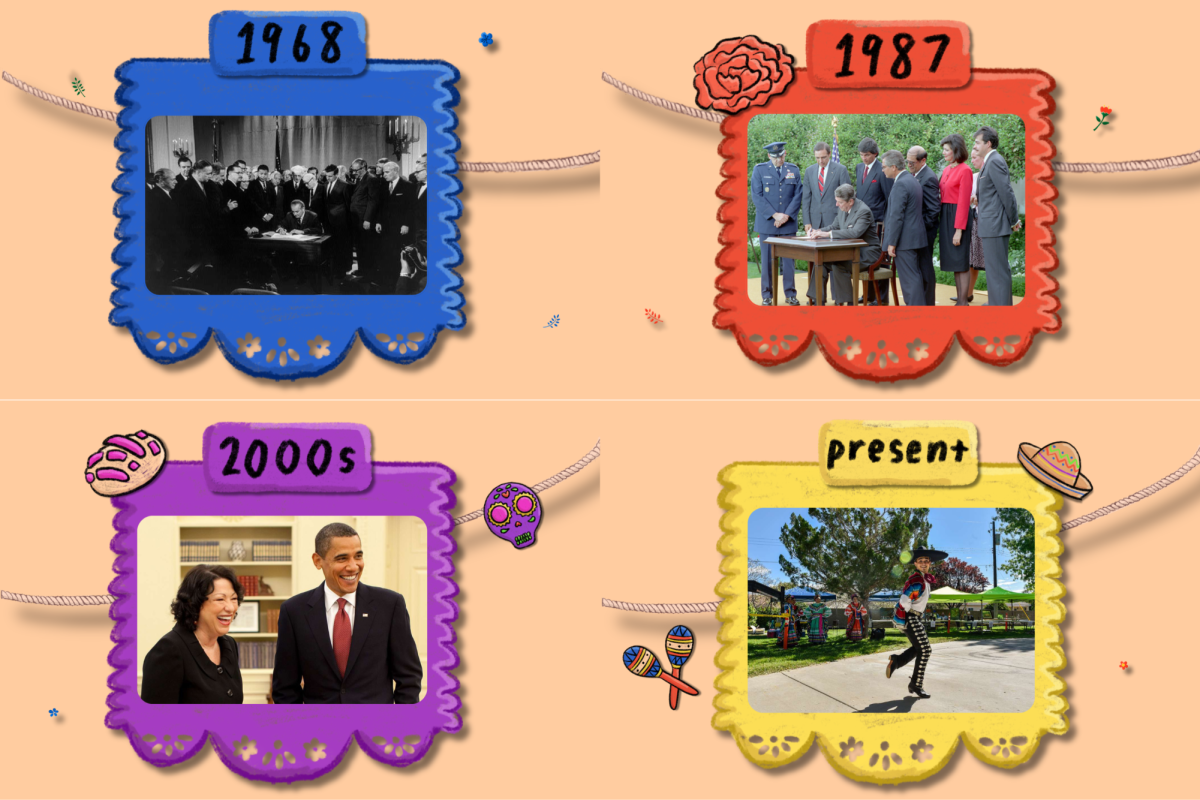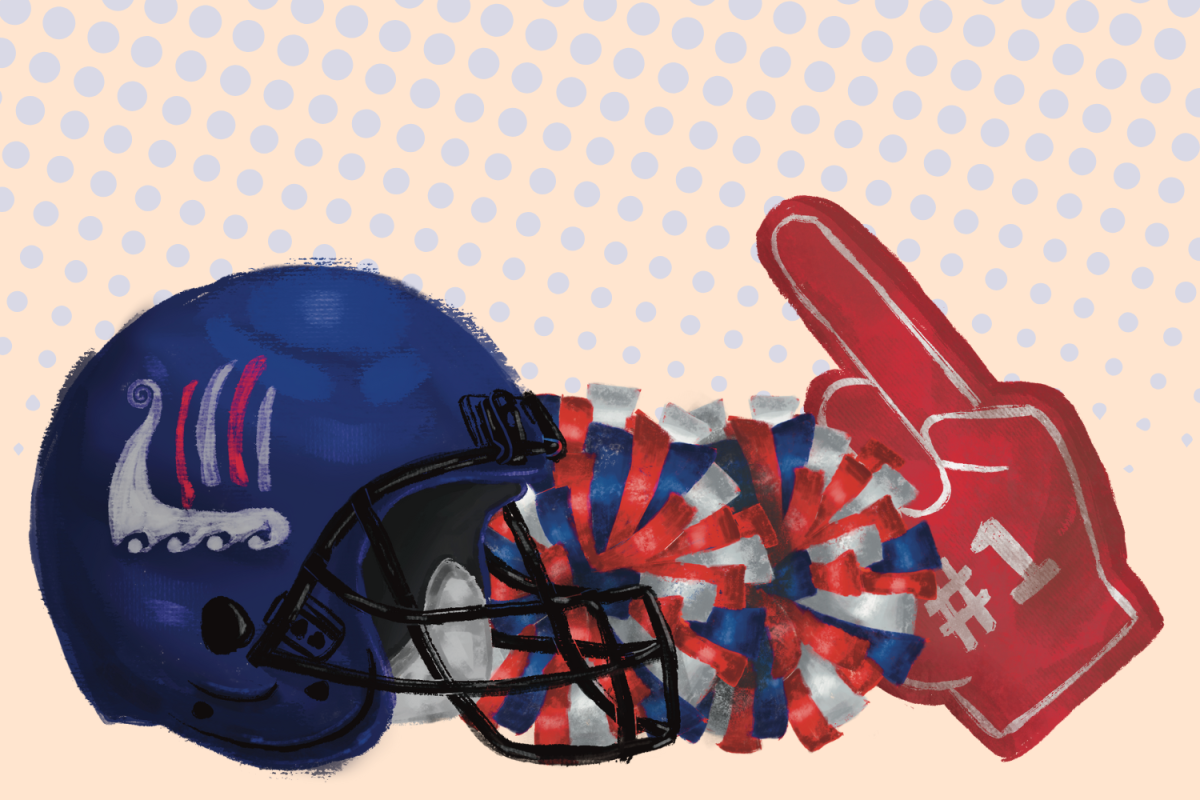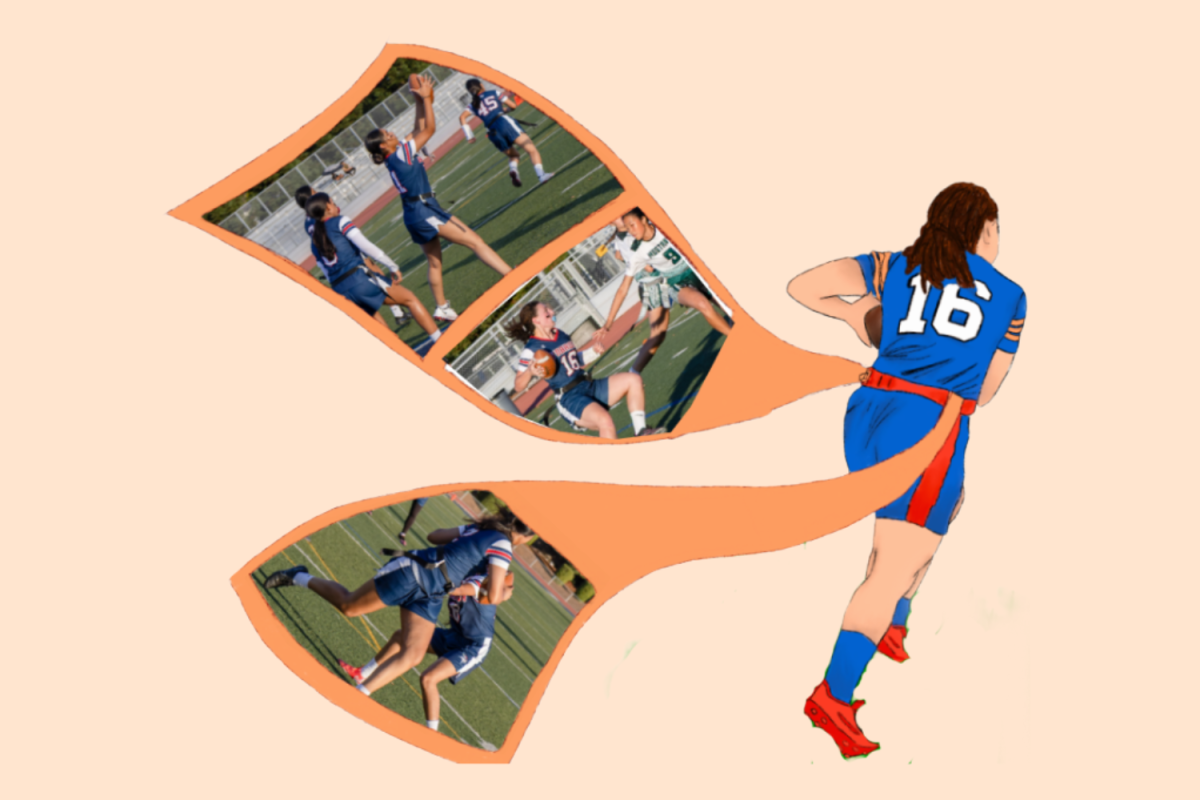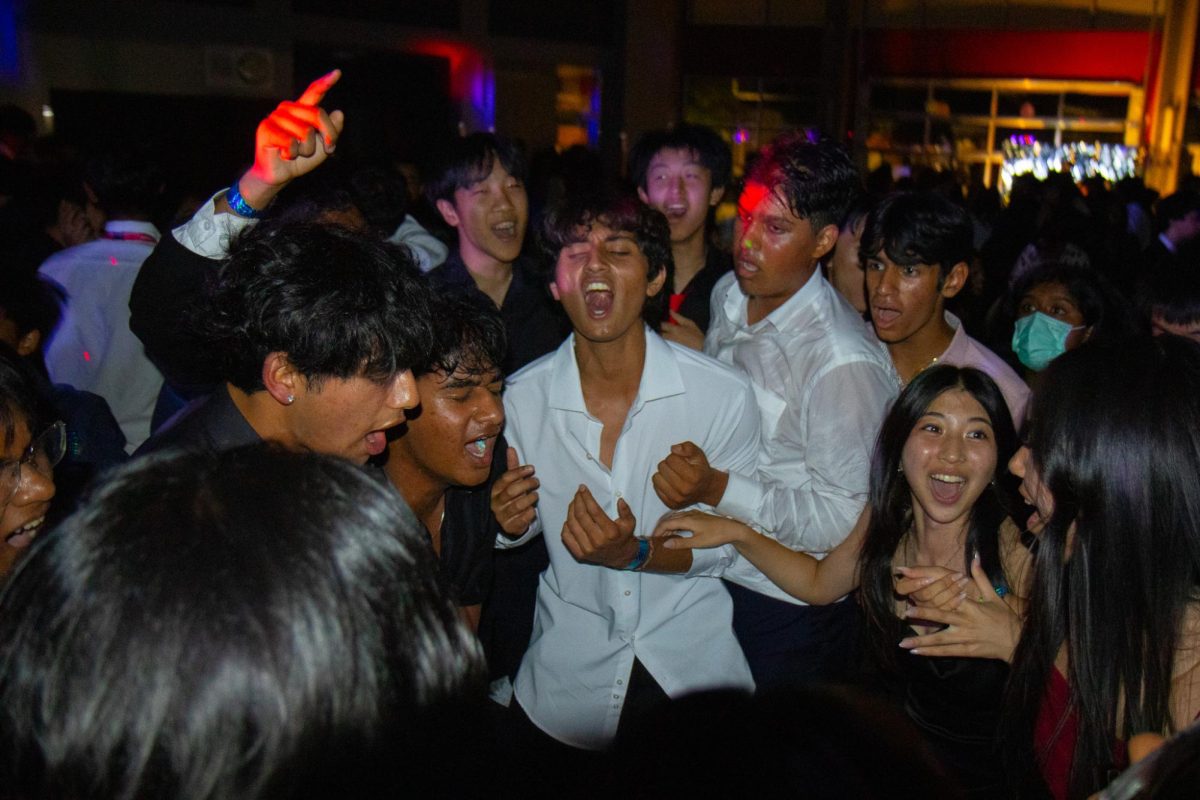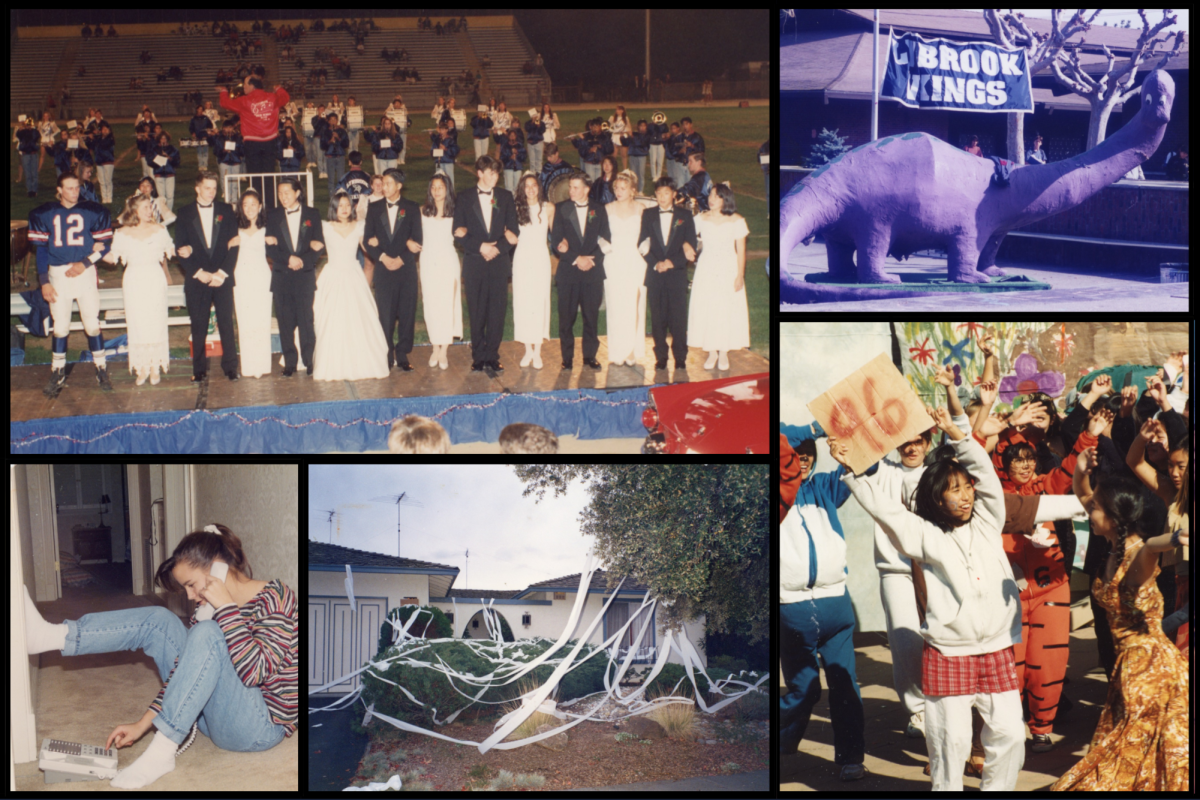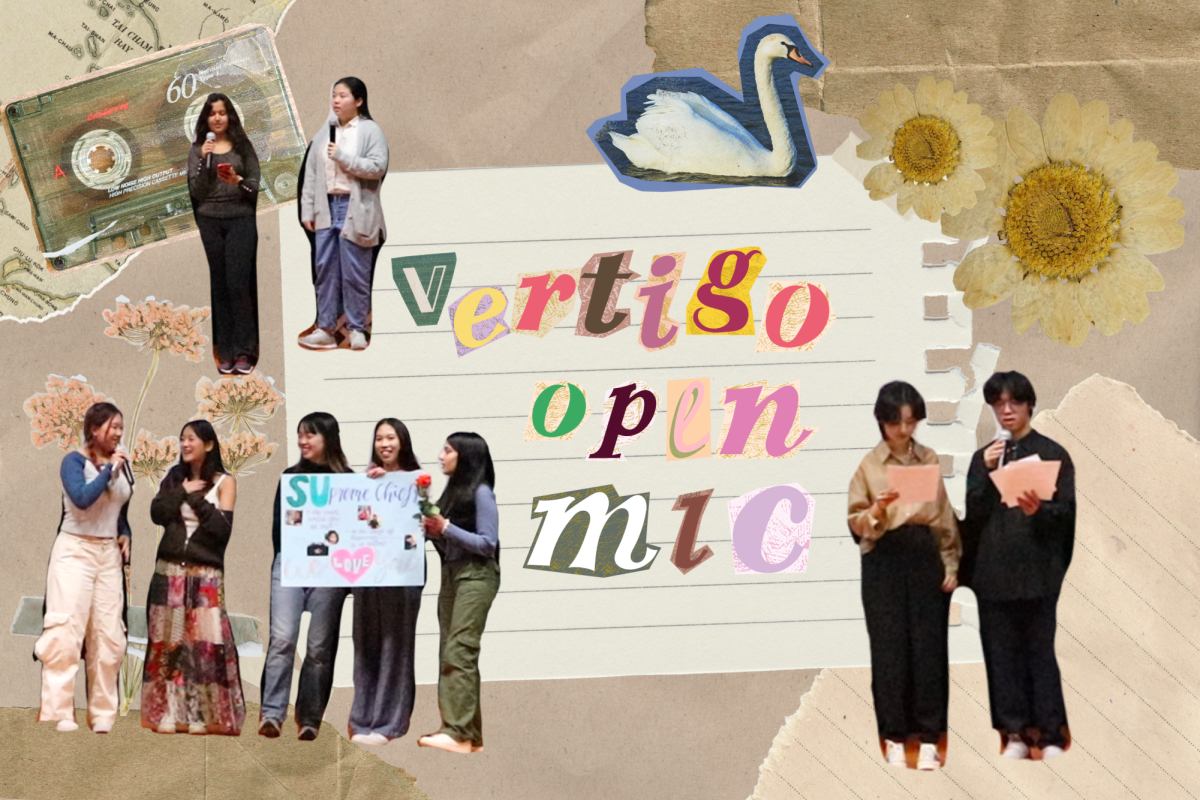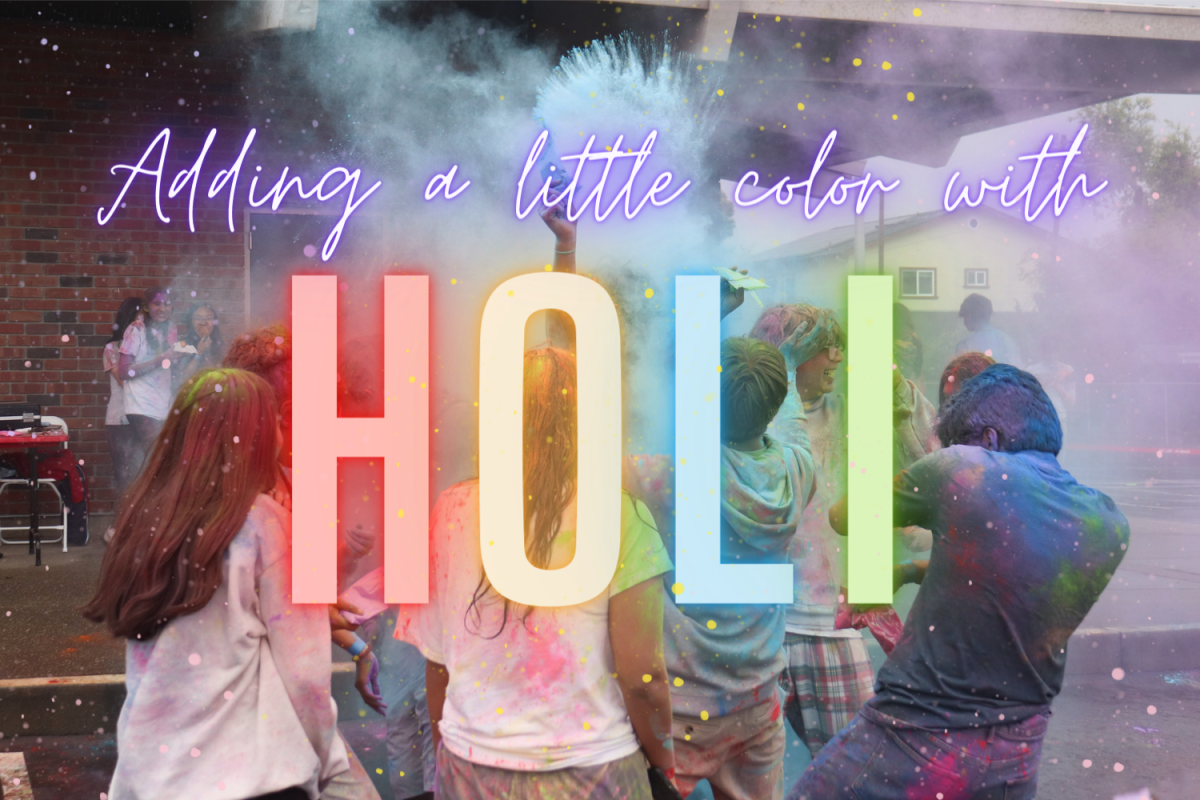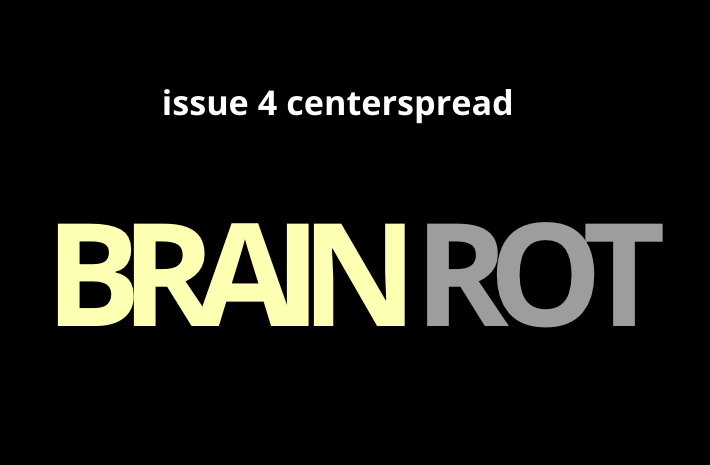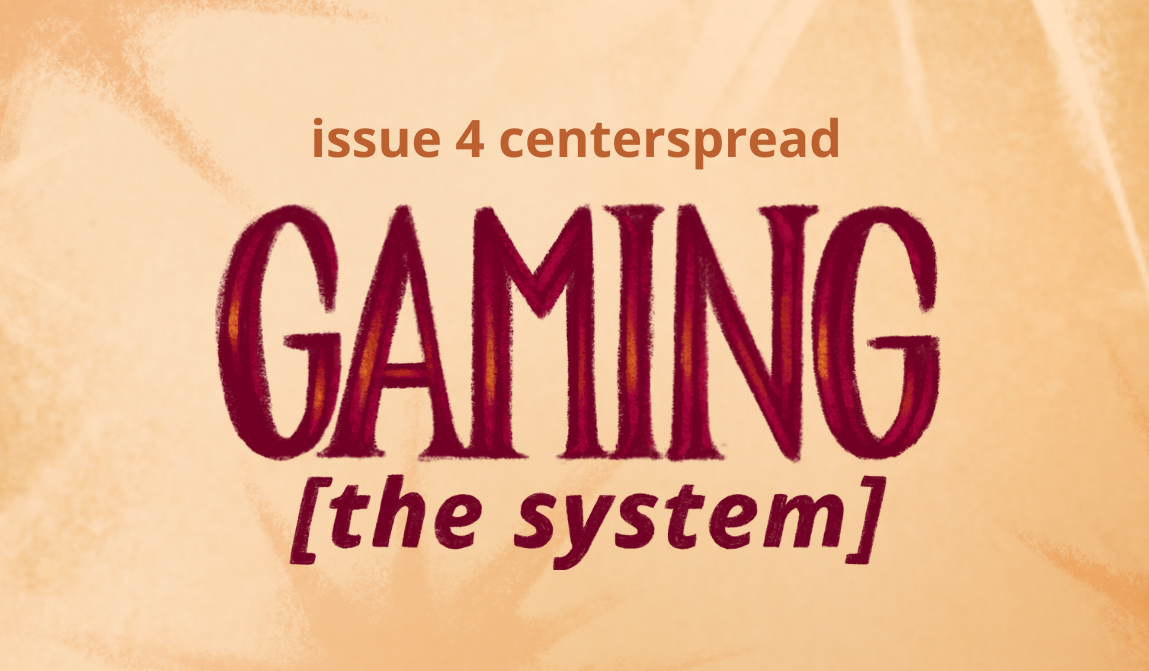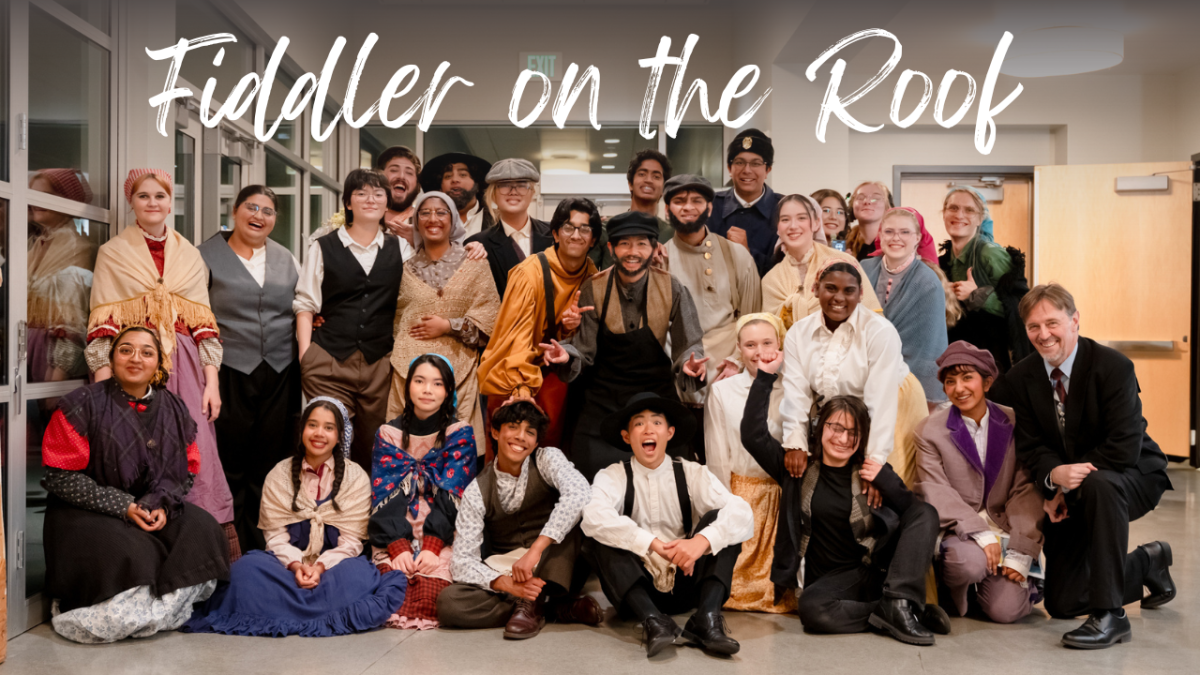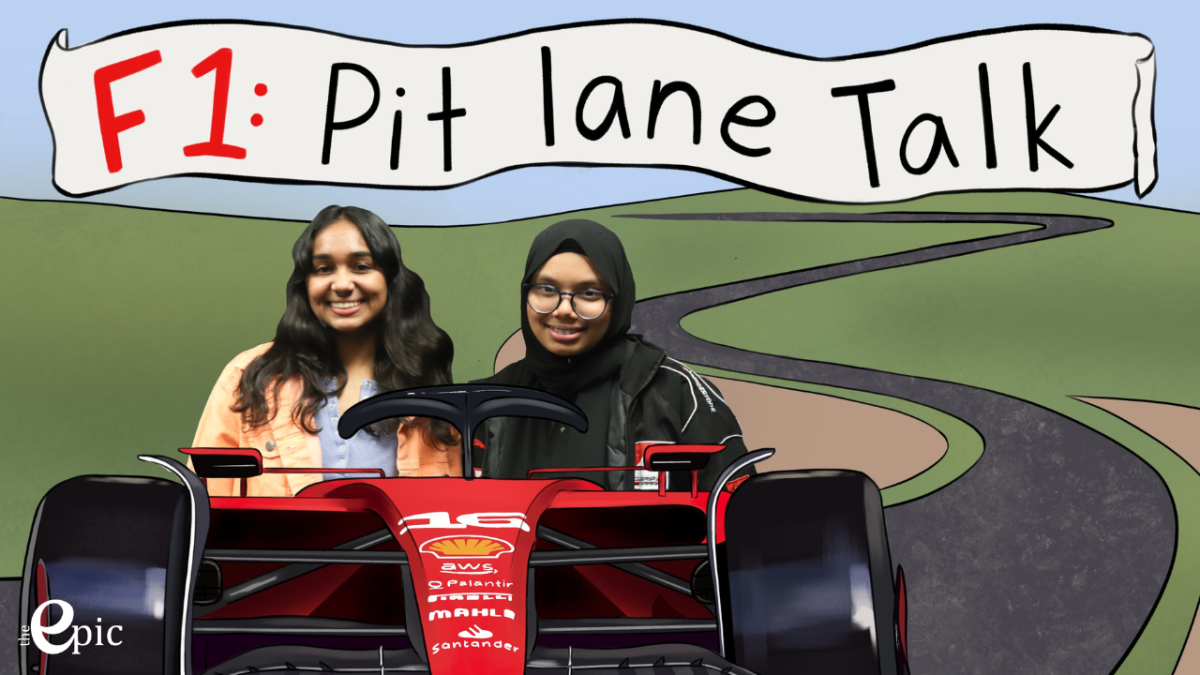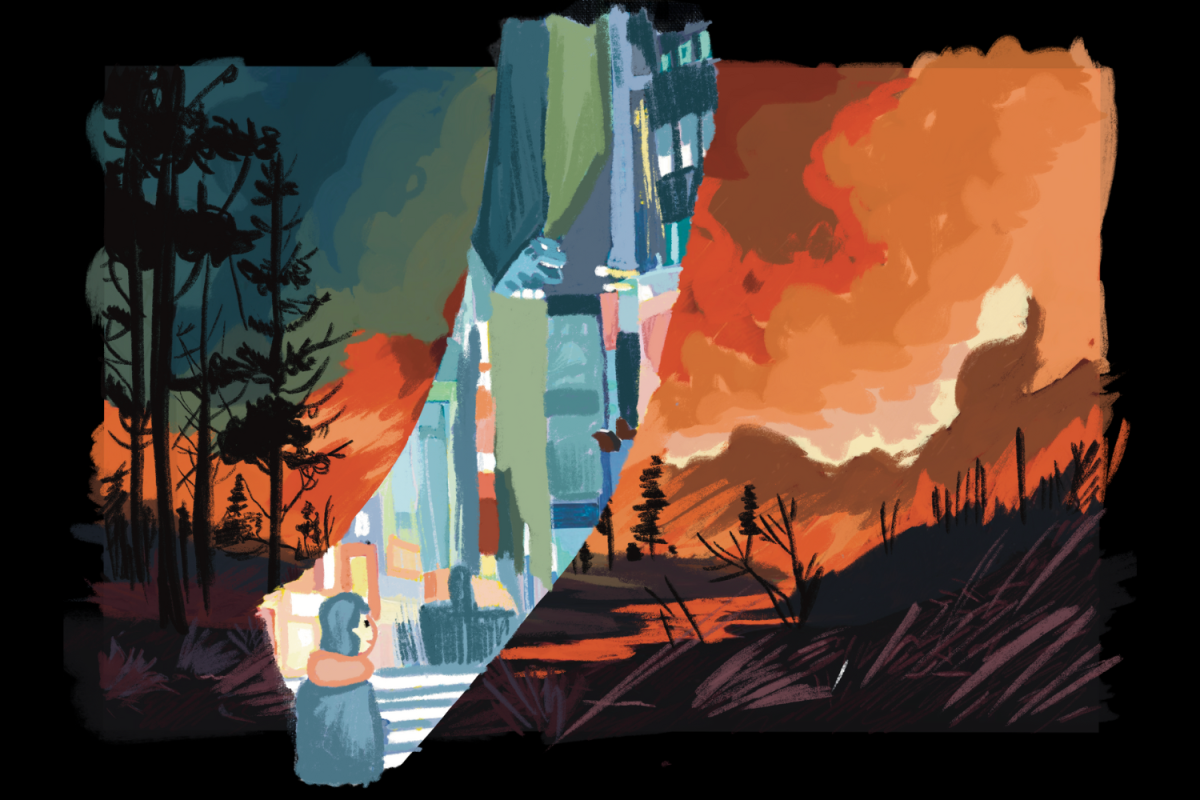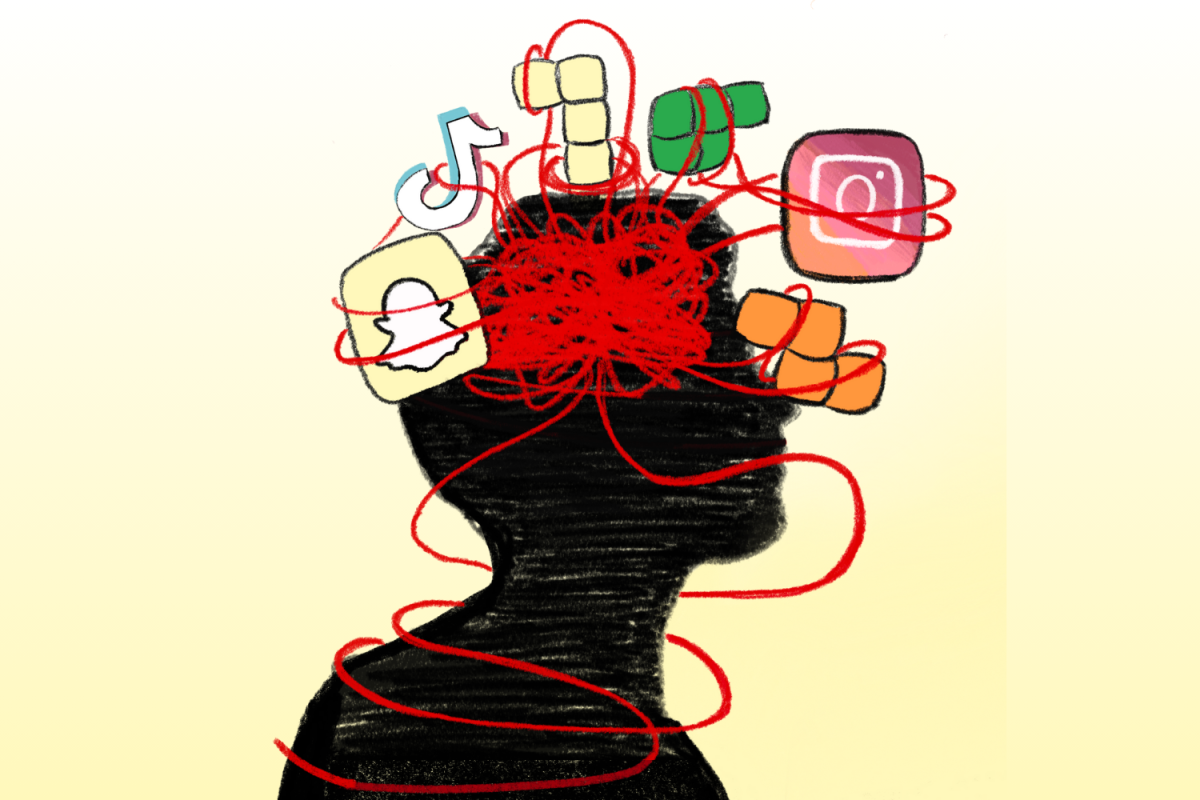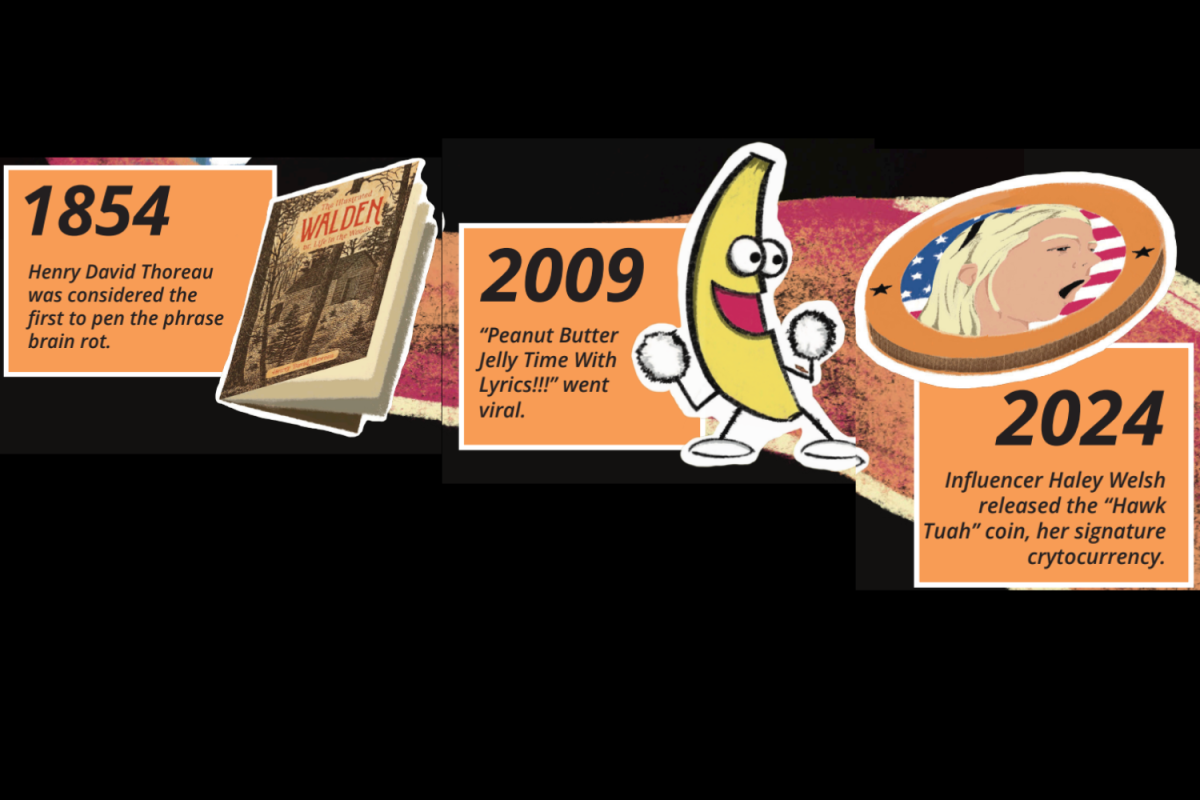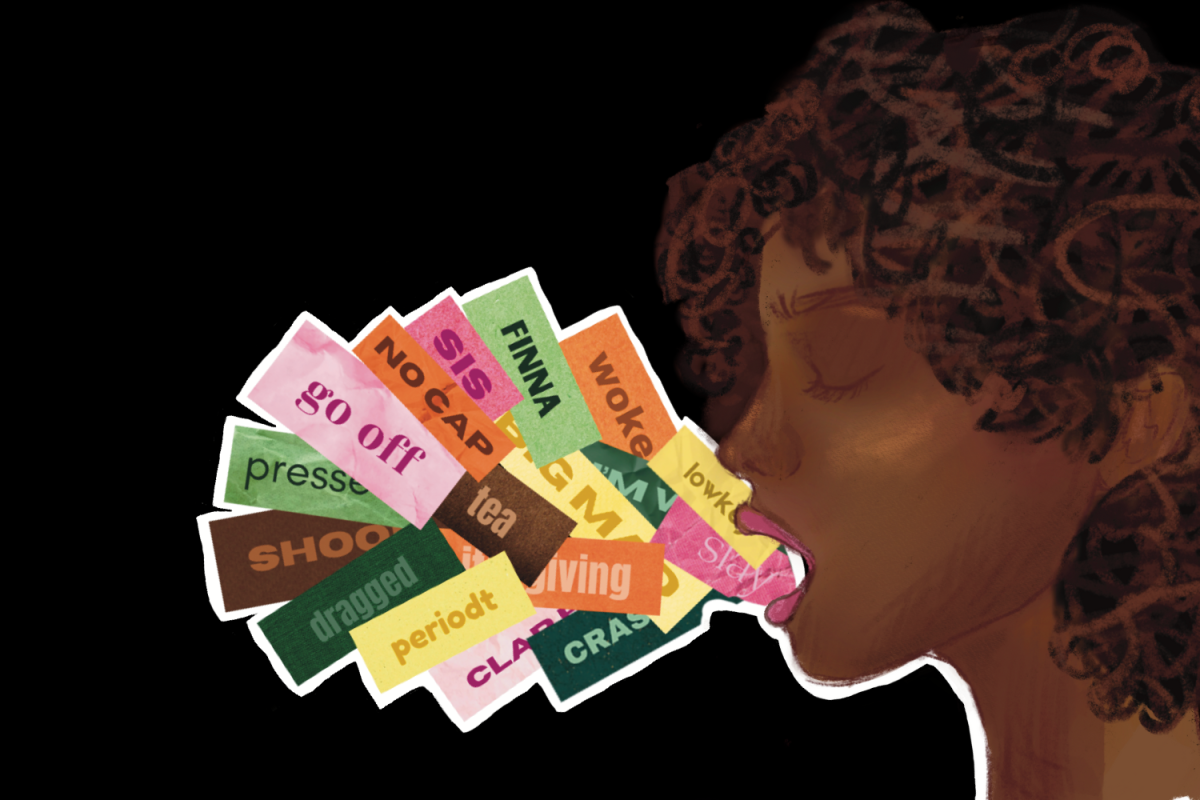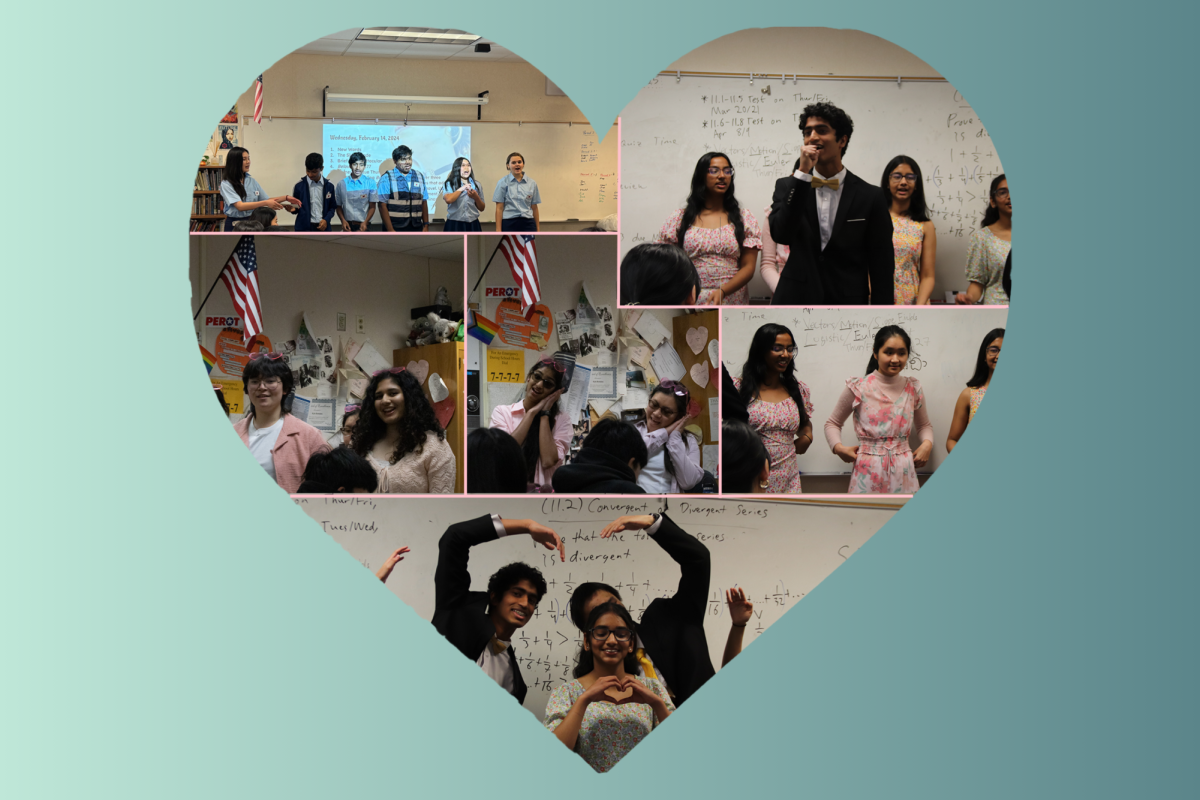As the cascade of short-form content fills our screens, a phenomenon coined as brain rot has become the backdrop for engagement with popular videos, memes and terms. We laugh, we scroll and we share — each minute spent pushing society into a world that focuses less and less on real-world issues.
Using humor as a way to cope with unfortunate realities is not an entirely new concept; historically, people have always turned to often short-lived distractions for comfort. For Generation X, it was MTV and sitcoms. For millennials, it was the rise of meme culture. Now, for Generation Z and Alpha, it’s the instant gratification we get from doom-scrolling on platforms like TikTok and Instagram.
“Students and adults enjoy humor — they always have and they always will,” English teacher Terri Fill said. “Shows like ‘Saturday Night Live’ or ‘The Daily Show’ make jokes about very serious real-world issues. When it starts to feel like there’s nothing that we can do about them, humor can act as a tension reliever.”
Although the entertainment value of brain rot and other short-form content is not to be ignored, the rise of brain rot in media has changed what society deems valuable. In a survey given to staff and students, 64.6 percent, or 174 of 270 Lynbrook respondents, reported feeling that brain rot distracted from real-world issues. Instead of having nuanced discussions, people have turned pressing topics into light-hearted jokes and memes, leading to surface-level engagement that disappears as quickly as it begins.
“There was this one video I saw on TikTok a while ago with a Chinese speaker talking about media censorship,” junior Ryan Xue said. “Another guy duetted it and translated it all into brain rot terms. I immediately closed the app after that one.”
Another recent example includes the internet’s newest obsession, the “Chopped Chin” guy, who garnered millions of views and swarms of fans surrounding him at school. The viral video highlighted an example of bandwagoning, where many of the students let their opinion be dictated by a majority, even when they may have not actually found the content funny. The bandwagon effect has been amplified by brain rot culture. People jump on trends in order to not feel left out from the masses. This only becomes more evident when we show that even when there are tragedies like the Los Angeles fires, conversations remain fixated on internet sensations like Chopped Chin. People’s collective energy toward filming random videos of and about Chopped Chin could be channeled into efforts that would actually have a benefit.
“In some cases, brain rot makes people more aware of an issue,” freshman Katelyn Wang said. “But if you’re going to talk about a serious topic, then brainwashing makes people think, ‘Oh, it’s just brain rot. I don’t need to pay attention.’”
From the perspective of many internet users, brain rot unites society into collectively engaging with funny terms or trends. However, while there is unification over which trends are most popular, this almost never translates into real-world action. In 2016, the viral #savetheturtles trend was an advocacy effort that, due to its virality, became more of a joke than its original cause. Since using the hashtag was meant to raise awareness about the dangers of plastic pollution and its impact on marine life, the “VSCO girl” aesthetic soon arose as a look that incorporated environmentally-friendly items.
Even though the original aesthetic was made up of environmentally-conscious practices like reusable straws and metal water bottles, it quickly morphed into a movement about appearances and stereotypes. #savetheturtles is now nothing more than a catchphrase to be made fun of. For issues similar to this, substantial change requires long-term engagement and commitment — something short-lived brain rot fundamentally undermines.
“It makes people move on from issues faster than necessary,” sophomore Emma Ha said. “If something turns into a trend, it immediately dies. It’s integrated into our culture.”
Another impact on modern day advocacy is the phenomenon of content-creators trying to monopolize tragedies using brain rot content, reducing support to melancholy videos with the hashtags, #hopecore and #viral littered in the caption. An abundance of natural disaster content has been made to embody a “sad girl” aesthetic or turned into mean-spirited videos. While this does spread awareness, it seldom inspires deeper engagement. Often, users create videos under the guise of caring about an issue, but the lack of real substance and desperate attempts at virality show their true motivations.
Additionally, it’s more common than not to see tragic events get overlooked in exchange for brain rot jokes. The death of musician Liam Payne is a perfect example. The internet may have initially grieved his death in waves of sympathy posts and condolences, but this was quickly forgotten after the next trend began, reflecting society’s inability to stop moving in order to actually process what’s going on around them.
“Any time that we don’t consider the individual involved, it becomes easier to be cruel,” Fill said. “We must stay focused on the fact that those are actual people with lives — they have mothers and fathers and coworkers and perhaps children and pets and loved ones. They are real people with feelings.”
At the same time, it can be argued that the unseriousness of brain rot is needed in times of high fear and anxiety. It allows people to have a coping mechanism and a form of escape — a way to release tension from overwhelming news and to have something more lighthearted to focus on. It’s a distraction that can also create a sense of community when everyone understands the same terms. Yet, this can become problematic when people choose to ignore real-world issues entirely in exchange for entertainment. Opting for brain rot content at the expense of learning about any issues our world experiences only creates a barrier against progress and hinders the ability to respond with collective action.
“Students don’t need to carry the weight of the world on their shoulders,” Fill said. “If it provides some stress relief for them to look at a meme on climate change or some other serious issue, then there is nothing wrong with that, as long as they realize that at some point in life, they could — and maybe should — choose to get involved in change.”
Addictive algorithms that feed people constant forms of brain rot do not leave time for society to truly process the seriousness of events. Humor and lighthearted content can be a good way to spread awareness, as long as it’s not overdone. When consuming brain rot, it’s important that humor does not become the endpoint of your engagement with the issue and instead an entryway into deeper understanding.
“When it comes to events where someone was hurt, we have to think about how they would feel if they saw us laughing at their hurt,” Fill said. “It really comes down to empathy. If we are human beings with empathy for a person who was hurt, then it’s not possible to laugh and make a meme of that.”









